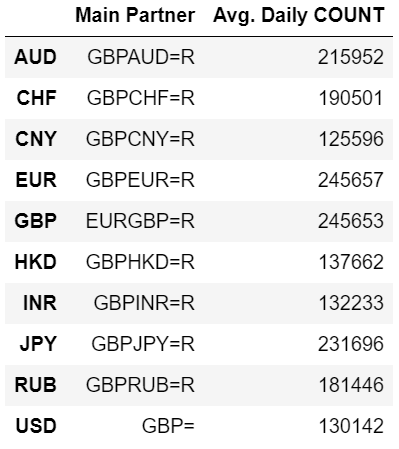I am searching for currency pair daily traded volume data via the python api. I use the cross rates from the MONEY CROSS/1 guide for all pairs of the currencies: ['AUD','CHF','CNY','EUR','GBP','HKD','INR','JPY','RUB','USD']
The get_timeseries function which i used so far to get currency price time series, does not return VOLUME. i discovered the parameter COUNT which can be inserted for fields. i thought it might be related. can i use it as an equivalent to traded volume (the absolute value does not matter only the proportion relative to other currency pairs must be correct)?
If not, how can i get daily volume, or even better average monthly volume for each currency pair via the python api?
thanks




